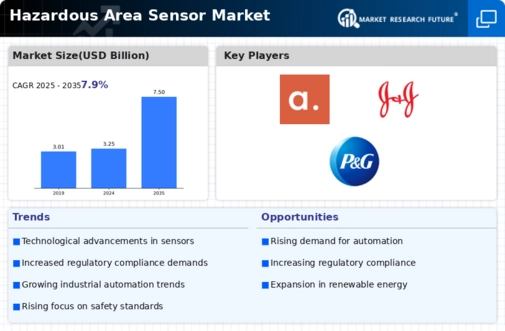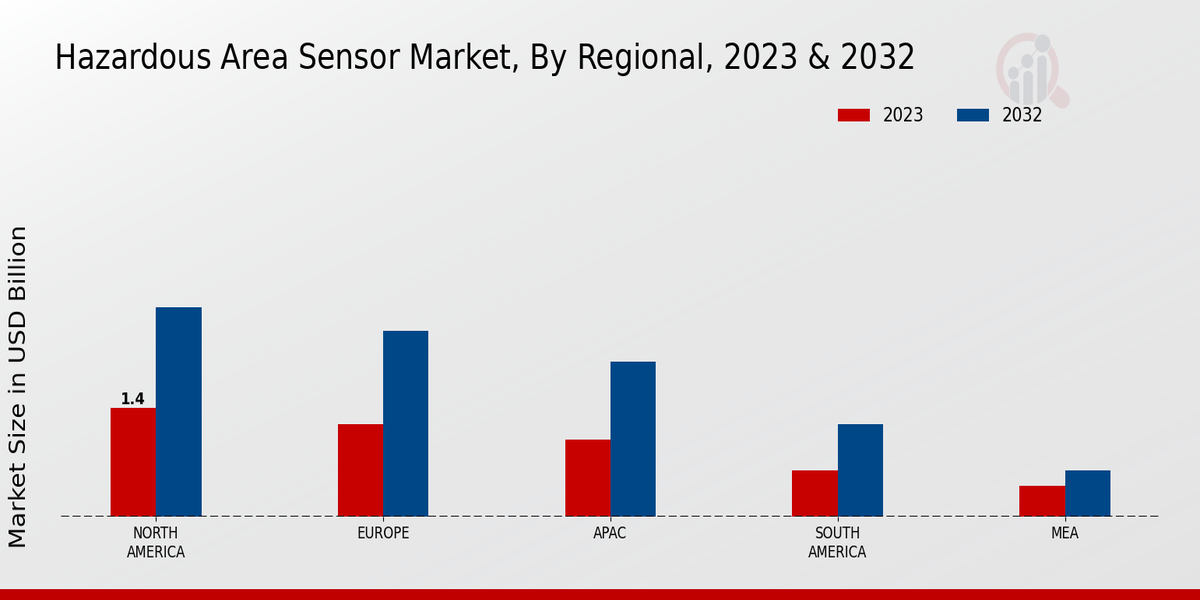Market Growth Projections
Rising Demand from Oil and Gas Sector
The oil and gas sector is a significant contributor to the Global Hazardous Area Sensor Market Industry. The inherent risks associated with oil extraction and processing necessitate the deployment of reliable hazardous area sensors. These sensors are essential for detecting flammable gases and ensuring safety in explosive environments. As the global demand for energy continues to rise, investments in oil and gas exploration and production are likely to increase. This trend is expected to drive the market, with estimates suggesting that the market could reach 7.5 USD Billion by 2035, reflecting the sector's critical need for advanced safety solutions.
Increasing Industrial Safety Regulations
The Global Hazardous Area Sensor Market Industry is experiencing growth driven by stringent industrial safety regulations. Governments worldwide are implementing rigorous safety standards to protect workers in hazardous environments. For instance, the Occupational Safety and Health Administration (OSHA) in the United States mandates the use of sensors in industries such as oil and gas, chemicals, and mining. This regulatory push is likely to propel the market, as companies invest in advanced sensor technologies to comply with these regulations. The increasing focus on workplace safety is expected to contribute significantly to the market's expansion, with projections indicating a market value of 3.25 USD Billion in 2024.
Growing Awareness of Environmental Safety
Growing awareness of environmental safety is influencing the Global Hazardous Area Sensor Market Industry. As industries face increasing scrutiny regarding their environmental impact, there is a heightened focus on implementing safety measures to prevent hazardous leaks and emissions. Regulatory bodies are emphasizing the importance of monitoring environmental conditions, prompting companies to invest in hazardous area sensors. This trend is particularly evident in sectors such as chemicals and pharmaceuticals, where compliance with environmental regulations is paramount. The rising emphasis on sustainability and environmental protection is likely to bolster the market, as organizations seek to enhance their safety protocols.
Expansion of Manufacturing and Industrial Sectors
The expansion of manufacturing and industrial sectors is a vital driver for the Global Hazardous Area Sensor Market Industry. As countries continue to industrialize, there is an increasing need for safety solutions in manufacturing facilities. Industries such as automotive, aerospace, and food processing are adopting hazardous area sensors to mitigate risks associated with flammable materials and toxic substances. This trend is particularly pronounced in emerging economies, where rapid industrial growth is occurring. The demand for reliable safety solutions is expected to drive market growth, as manufacturers prioritize worker safety and compliance with international safety standards.
Technological Advancements in Sensor Technologies
Technological advancements are a crucial driver for the Global Hazardous Area Sensor Market Industry. Innovations in sensor technology, such as the development of wireless and smart sensors, are enhancing the capabilities of hazardous area sensors. These advancements enable real-time monitoring and data analytics, improving safety and operational efficiency. For example, the integration of IoT technology allows for remote monitoring of hazardous environments, reducing the risk of human exposure. As industries increasingly adopt these advanced sensor solutions, the market is projected to grow, with a compound annual growth rate of 7.9% anticipated from 2025 to 2035.













